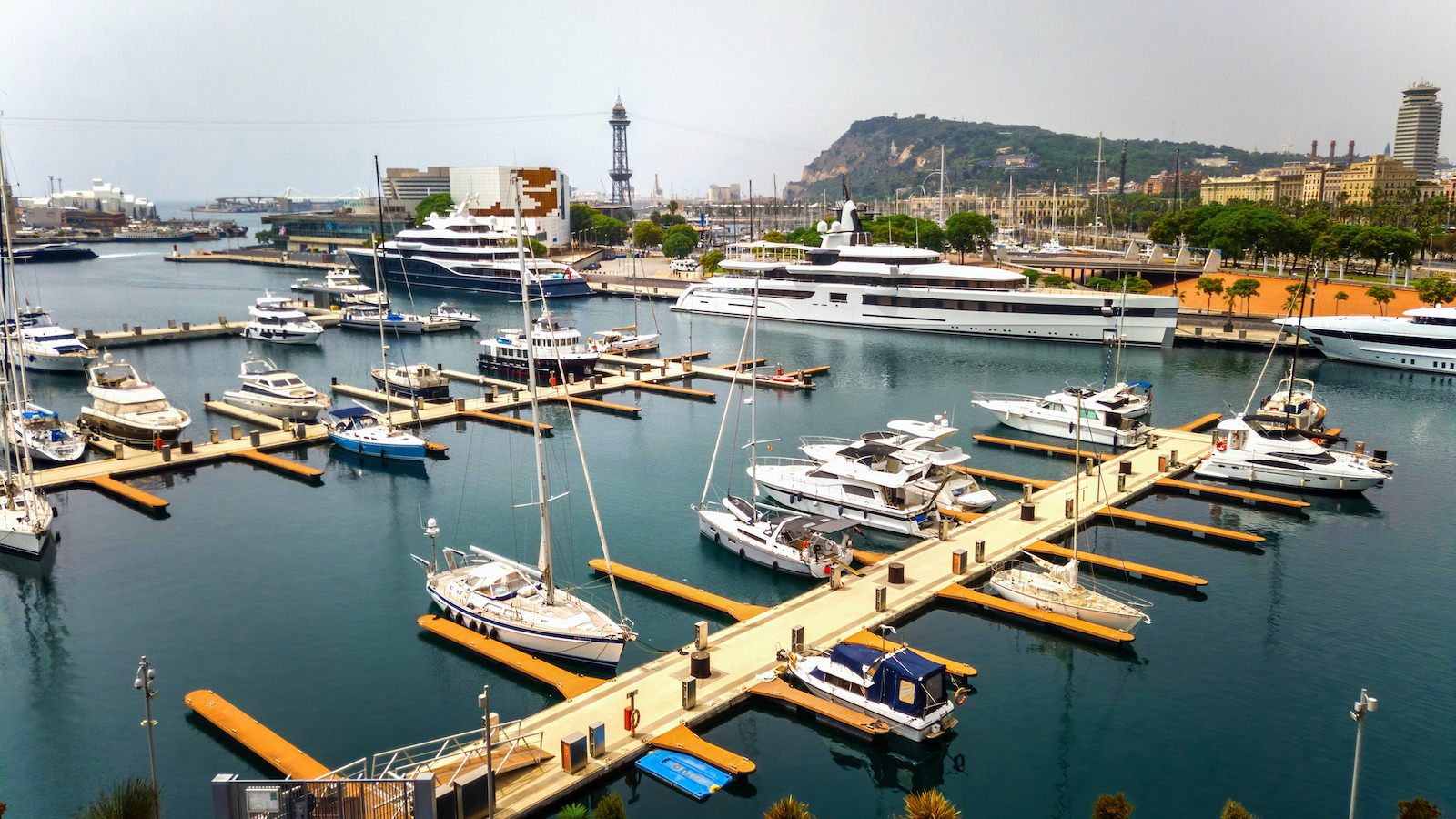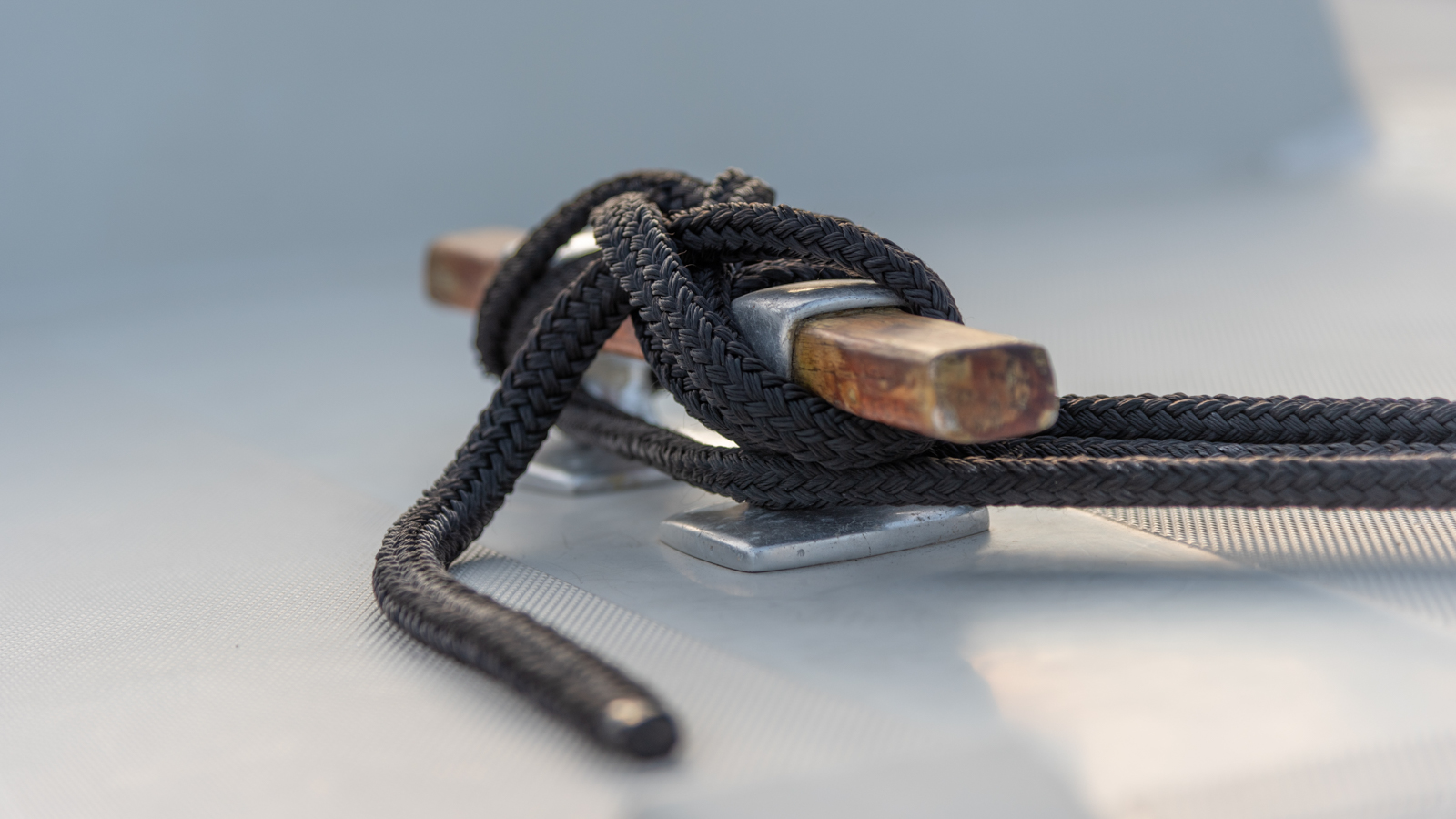Maneuvers in port can be considered the most delicate moments of navigation. Generally, boaters tend to recognize greater risks—and therefore greater attention—at the time of

Prepare the Mooring Lines before Starting the Maneuver
Just as when entering a port a good boater prepares everything necessary even before approaching the marina, starting with the correct positioning of the fenders, it is equally important to plan and prepare everything necessary before casting off. The
After analyzing the situation, arrange the lines so they can be managed with a few quick gestures: they should be neatly gathered and brought outside the guardrail, allowing for an easy and quick throw at the right moment. It is also necessary to establish the order in which the lines will be cast off, to avoid difficulties: the first lines and warps to be released are those downwind, which are not under load and therefore not actually working. Let’s now look at the typical case where the skipper is called to cast off in a stern-to mooring.

Casting off in Stern-to Mooring
The most classic mooring is certainly the stern-to mooring, also known as stern-to. Certainly, mooring in reverse in a crowded port is not always easy, especially for sailboats; however, this choice allows the stern to face the
How to cast off mooring lines in such a situation? Obviously, things change slightly if you are leaving your usual berth, to which you will return at the end of the day, or if you are casting off in a
How to Prevent the Propeller from Catching the Bow Line
When it comes to casting off, obstacles can vary depending on the situation. One element always present when leaving a stern-to mooring is the risk of the bow mooring line ending up in the propeller. After ensuring that the cables in question are not tangled, both the bow and stern lines can be released: at this point, you can engage forward gear; as soon as the boat gains momentum, you must immediately stop the propeller, ensuring you pass over the bow line (which should be submerged) without risk, and then re-engage the gear. When possible, in the absence of wind, it is advisable to release the bow line well in advance, ensuring it is well below the propeller level. What to do in the presence of wind?
Wind Won’t Trick Me: Casting off Safely
There are essentially two main factors that make it more difficult to maneuver out of a mooring in port: the presence of wind and the proximity of other boats. In case of wind, it is essential to know that nothing can be left to chance, and the maneuver to exit the berth must be continuous, without interruptions or second thoughts.
We will start by releasing the downwind lines, knowing that even without these cables, the boat will remain in position. When ready to leave, the remaining lines, under load, will be released, with the helmsman then needing to accelerate immediately, following the sequence seen above to avoid entangling the bow line in the propeller.
The problem at this point is the potential nearby boats: how to prevent the wind from bringing us dangerously close to adjacent hulls? As soon as there are no more lines, in the presence of wind, the bow will tend to drift downwind, potentially bringing the stern closer to the upwind boat. You could act preventively, for example, by passing a line over the bow of the potential downwind boat, taking advantage of a cleat, to keep the boat in position and have a fixed point to prevent our bow from drifting. It should also be emphasized that, in the case of nearby boats, attention should not only be on keeping our propeller away from our lines during sinking: it is advisable to ensure that our blades—like the keel before and the rudder afterward—do not get too close to the warp of the nearby boat.

The Help of our Marina’s Dockhands
With due care, it is almost always possible to cast off without risks. Those who choose to moor in our Genoa marina can always rely on the help of our professional dockhands, to handle any difficulty without stress: at Marina Porto Antico, we can count on 30 operators employed, with the presence of at least one operator 365 days a year, 24 hours a day!
This is why we are the ideal choice for those who want to book a berth in Genoa.



